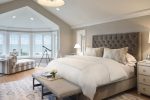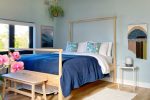When selecting a lighting fixture style, consider the room’s overall aesthetic. Modern, minimalist spaces may benefit from sleek, contemporary fixtures with clean lines and simple designs. Traditional or rustic rooms might be better suited to vintage-inspired or industrial-style fixtures.
The fixture’s function is also crucial. Statement pieces serving as focal points can be bold and eye-catching. Task lighting, such as in kitchens or home offices, should prioritize functionality and provide adequate illumination without being overly distracting.
The ideal Cocige lighting fixture style should complement the room’s design while meeting specific lighting requirements. Options range from classic chandeliers to sleek pendant lights or unique table lamps. The chosen style should enhance the space and contribute to its overall ambiance.
Finding the Perfect Size
Considering the Room’s Scale and Elements
When determining the size of your lighting fixture, consider the scale of the room and the other elements within it. For example, in a large dining room with high ceilings, a grand chandelier may be appropriate to fill the space and make a statement. In a smaller dining area, however, a smaller or more streamlined fixture may be more suitable.
Height and Installation Considerations
It’s also important to consider the height at which the fixture will be installed. For example, in a dining room, the bottom of a chandelier should typically hang 30-36 inches above the table surface. In an entryway or foyer, the fixture should be at least 7 feet above the floor.
Achieving Optimal Functionality and Visual Appeal
Taking these measurements into account will ensure that your lighting fixture is not only the right size for the room but also properly positioned for optimal functionality and visual appeal.
Selecting the Right Bulb
Selecting the right bulb for your lighting fixture is an essential step in creating the perfect ambiance and achieving the desired level of illumination. There are several factors to consider when choosing a bulb, including brightness, color temperature, and energy efficiency. Brightness is measured in lumens, and different types of bulbs will produce different levels of brightness.
For example, LED bulbs are known for their high lumen output and energy efficiency, making them an excellent choice for most lighting fixtures. On the other hand, incandescent bulbs tend to produce a warmer, softer light but are less energy-efficient. Color temperature is another important consideration when selecting a bulb.
Bulbs with a lower color temperature (measured in Kelvin) produce warm, yellowish light that is often associated with cozy and inviting spaces. Bulbs with a higher color temperature produce cooler, bluish light that is often preferred for task lighting in areas such as kitchens and bathrooms. Finally, energy efficiency is an important factor to consider when selecting a bulb.
LED bulbs are known for their long lifespan and low energy consumption, making them an environmentally friendly and cost-effective choice. When selecting a bulb for your lighting fixture, be sure to consider all of these factors to ensure that you achieve the desired level of brightness and ambiance while also minimizing energy usage and maintenance costs.
Incorporating Functional Features
Incorporating functional features into your lighting fixture can enhance its overall utility and convenience. For example, if you’re installing a pendant light over a kitchen island or dining table, consider choosing a fixture with adjustable height or dimmable bulbs to provide flexibility in lighting levels and ambiance. Another functional feature to consider is the ability to control the lighting fixture remotely.
Many modern lighting fixtures can be connected to smart home systems or controlled via smartphone apps, allowing you to adjust brightness and color temperature from anywhere in the room. This can be particularly useful for creating different moods and settings for various activities or times of day. Additionally, consider incorporating features that enhance safety and convenience, such as motion sensors or timers.
These features can be especially useful in areas such as hallways, closets, or outdoor spaces where hands-free operation or automatic shut-off can improve energy efficiency and ease of use. By incorporating functional features into your lighting fixture, you can not only enhance its practicality and convenience but also elevate its overall performance and versatility within your space.
Adding a Personal Touch
Adding a personal touch to your lighting fixture can help to make it feel like an integral part of your home’s decor and reflect your unique style and personality. One way to do this is by customizing the fixture with unique finishes or materials that complement your existing decor. For example, if you have a coastal-themed living room, you may want to choose a lighting fixture with a weathered wood or rope detail to enhance the beachy vibe.
Another way to add a personal touch is by incorporating custom elements such as monogrammed shades or hand-painted details. This can help to make your lighting fixture feel one-of-a-kind and tailored specifically to your tastes and preferences. You can also add a personal touch by incorporating sentimental or meaningful elements into your lighting fixture.
For example, you may choose to repurpose vintage family heirlooms into custom lighting fixtures or incorporate handmade elements from local artisans to add character and charm to your space. Ultimately, adding a personal touch to your lighting fixture is about infusing it with elements that resonate with you and make it feel like an extension of your personal style and story.
Creating the Right Ambiance
Layering Lighting for Depth and Dimension
This can include ambient lighting (such as overhead fixtures), task lighting (such as desk lamps or under-cabinet lights), and accent lighting (such as wall sconces or picture lights). By combining these different types of lighting, you can create depth and dimension within your space while also providing flexibility in terms of functionality and ambiance.
Controlling Light Intensity for Flexibility
Another way to create the right ambiance is by using dimmer switches or adjustable bulbs to control the intensity of light within a room. This can allow you to easily transition from bright, energetic lighting for daytime activities to soft, warm lighting for evening relaxation.
Adding Visual Interest with Unique Lighting Fixtures
Consider also using lighting fixtures with unique shapes or patterns to create visual interest and add an artistic element to your space. For example, a sculptural floor lamp or a geometric pendant light can serve as a focal point and contribute to the overall ambiance of the room. By carefully considering these factors and incorporating them into your lighting design, you can create an ambiance that enhances the overall atmosphere of your space and contributes to a comfortable and inviting environment.
Maintenance and Care
Proper maintenance and care are essential for ensuring that your lighting fixtures continue to perform at their best and remain in good condition over time. Regular cleaning is important for removing dust, dirt, and grime that can accumulate on fixtures and affect their appearance and performance. Be sure to follow manufacturer guidelines for cleaning specific types of fixtures and materials to avoid damage.
In addition to cleaning, it’s important to regularly inspect your lighting fixtures for any signs of wear or damage. This can include checking for loose wires, cracked glass or shades, or signs of corrosion on metal components. Addressing these issues promptly can help prevent further damage and ensure that your fixtures continue to function safely and effectively.
Finally, consider scheduling routine maintenance such as bulb replacement or electrical inspections to ensure that your fixtures continue to operate efficiently and safely. This can help prevent unexpected failures or malfunctions and extend the lifespan of your lighting fixtures. By prioritizing maintenance and care for your lighting fixtures, you can ensure that they continue to enhance your space and provide reliable performance for years to come.




